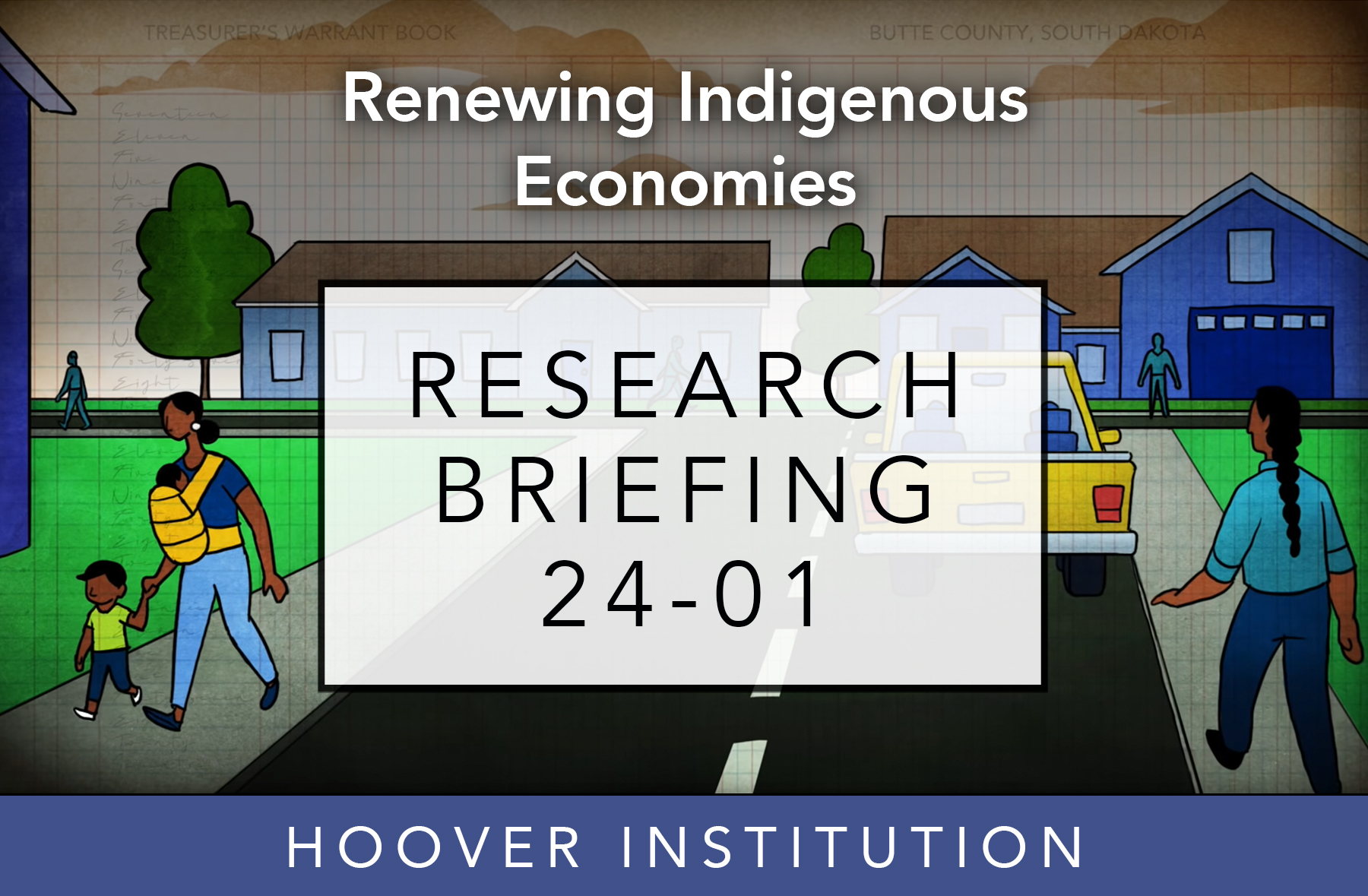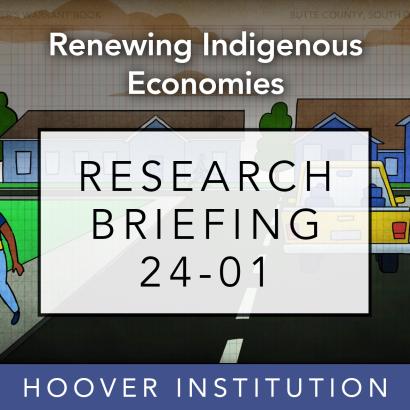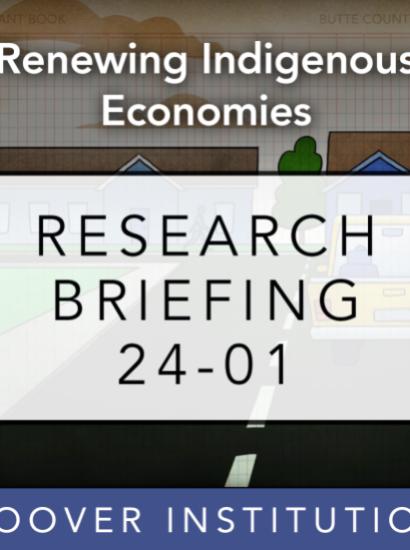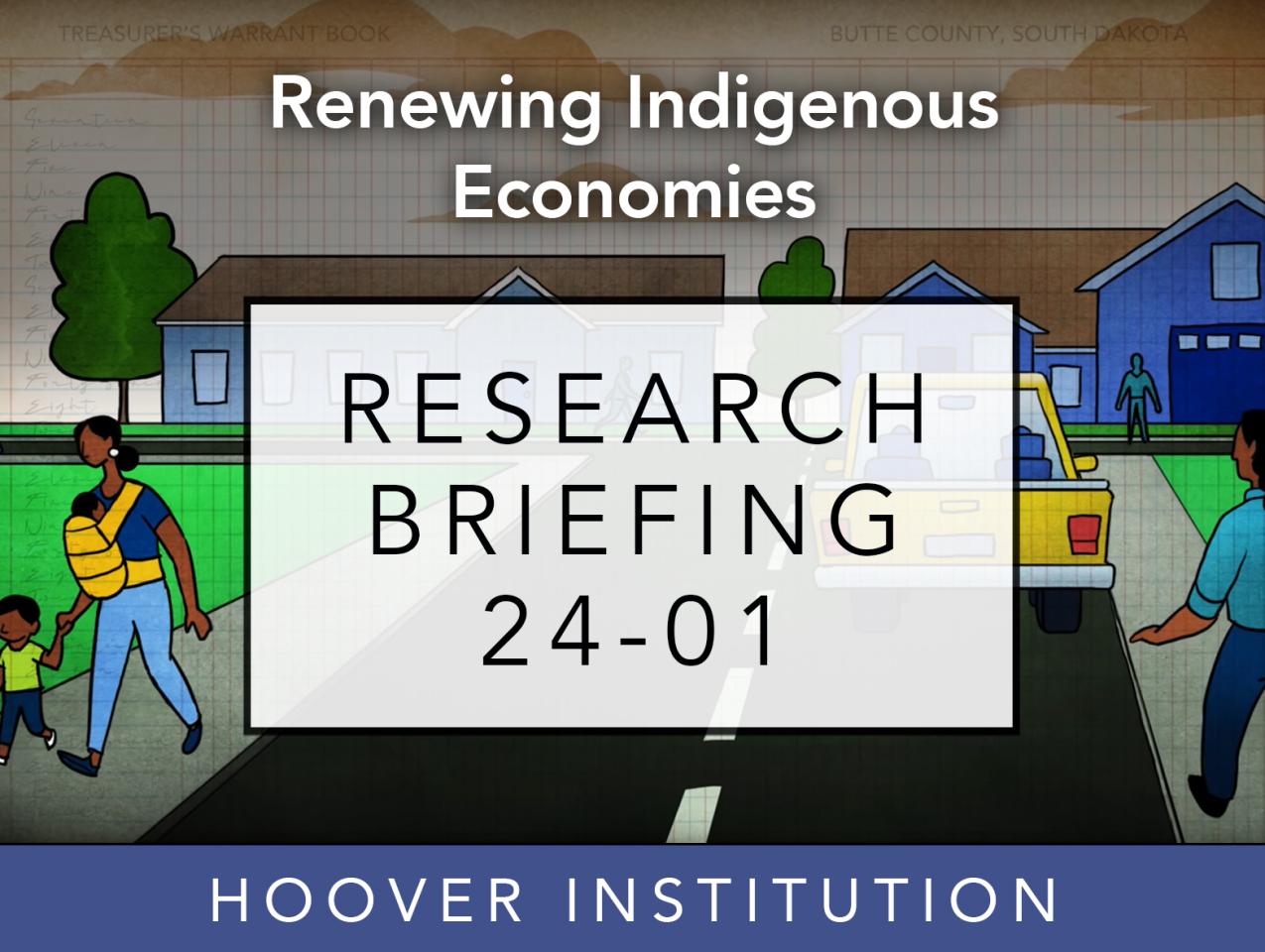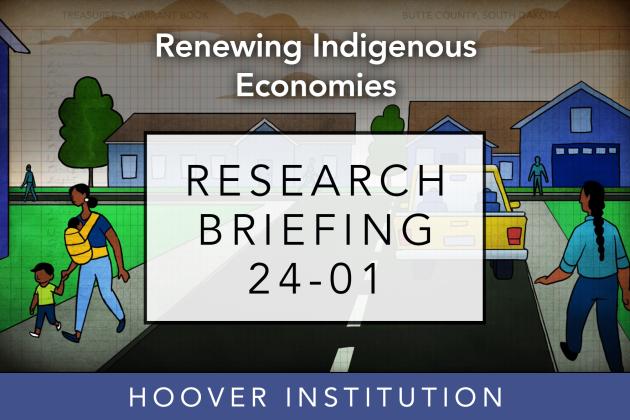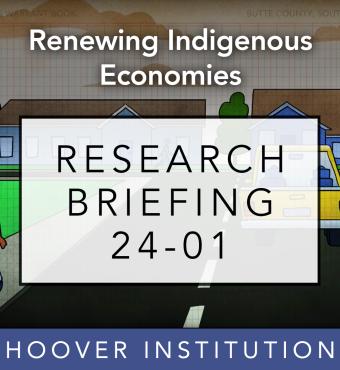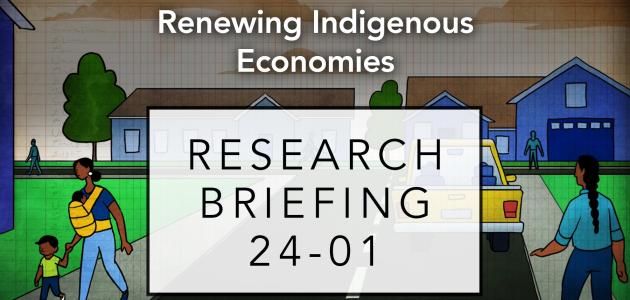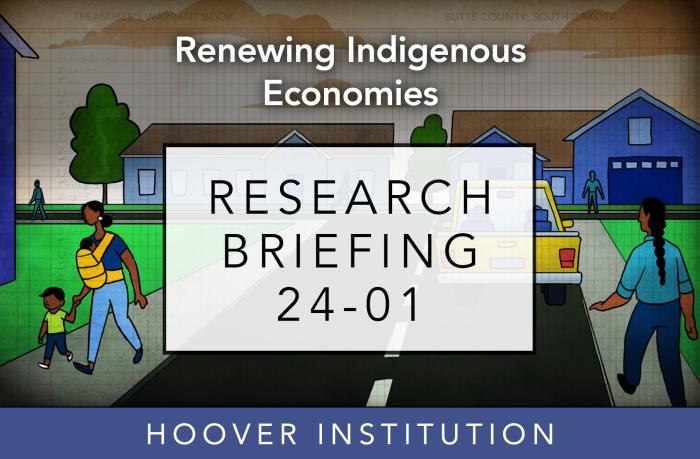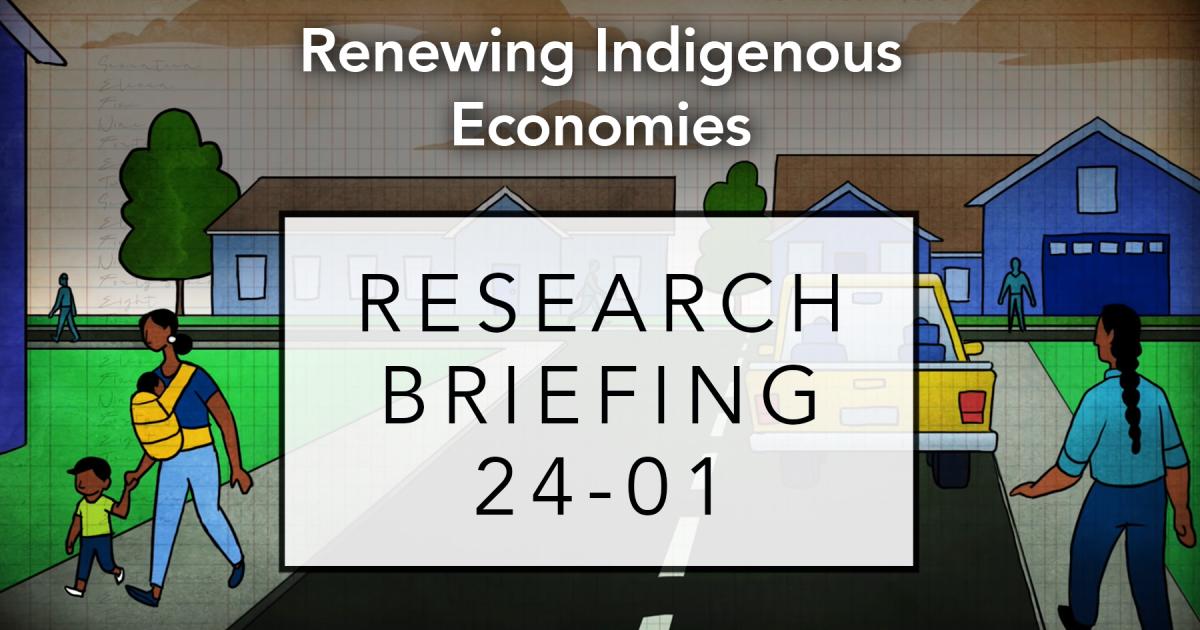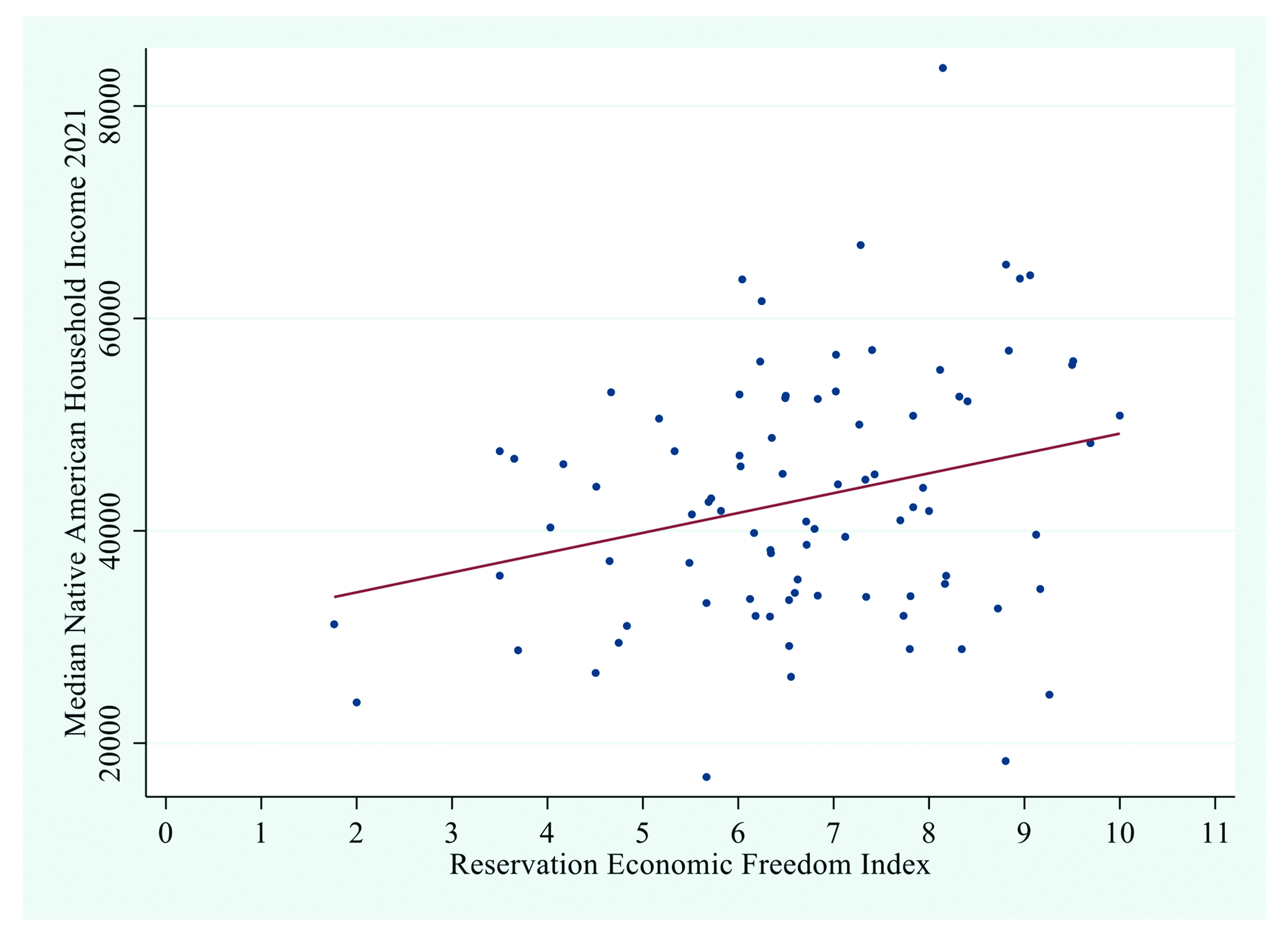
A cross-reservation measure of regulatory simplicity and certainty predicts higher incomes for American Indians living on reservations.
Based on Thomas Stratmann, “A Reservation Economic Freedom Index,” Public Choice (2023), https://doi.org/10.1007/s11127-023-01088-3.
Economic Freedom on America... by Hoover Institution
The Research Problem
Per capita incomes for Native Americans on reservations lag significantly behind US average income. According to the American Community Survey, the median American Indian household income on reservations in the lower 48 states was $42,224 in 2021, lower than the median household income for Mississippi, the poorest state in the United States ($52,719). Moreover, income disparities across reservations are significant. Native American median household income in the five wealthiest reservations is more than eight times higher than in the five poorest.
Native American economies have not always been in economic stagnation, however. Prior to federal regulations established over the past 150 years, indigenous economies thrived. The presence of entrepreneurship and trade in precolonial America can be traced back over centuries. Tribes traded with one another and with Europeans and settlers, and they enjoyed economic freedoms like property rights and systems of conflict resolution.
These modern and historical realities raise puzzles. Why are some reservations today as prosperous as surrounding counties while others lag significantly behind? And why do incomes vary so much across sovereign American Indian nations?
What I Examined
Economic freedom is an important predictor of economic well-being across countries and states. Drawing on this insight, the paper develops a Reservation Economic Freedom Index (REFI), classifying institutions on reservations based on the extent to which individuals are free to transact and create enterprise. This approach follows the lead of other economic freedom rankings, such as the ones published by the Heritage Foundation and the Fraser Institute, which provide critical information to scholars and policymakers trying to understand the effect of institutions on economic growth and develop solutions to pressing societal issues, such as poverty.
The REFI consists of components representing market freedoms and institutions that the academic economics and political science literature suggests hold promise to generate economic prosperity. Native Americans on reservations are governed by a mix of institutions, some of which are externally imposed by federal and state governments. Others are of their choosing. Some tribes have more flexibility than others to determine the rules of the game, depending on the states in which they are located. The development of this index is guided by research in political science, economics, other social science disciplines, and law.
Factors considered in the REFI measure the rule of law, the security of property rights, the predictability of Native American courts and policies, and laws and federal regulations implemented by the United States, focusing mainly on institutions under tribal control. Components such as legal codes regulating land, commerce, and taxes come from tribal laws. Judicial independence components come from an analysis of tribal constitutions and bylaws.
Findings
For the ninety reservations covered by this index, the 2021 median American Indian household income average in reservations was $42,989, and the REFI was 6.70 on a scale of 1 to 10. Figure 1 shows the values of income and REFI for each reservation and the fitted regression line, indicating that higher index values are associated with higher median Indian household income. The estimates indicate that a one-point increase in the REFI is associated with a $1,869 increase in median Indian household income. A similar outcome is obtained when correlating the REFI with the overall median income of households residing on the reservation, whether or not American Indian.
The analysis shows that reservations with higher REFI values are more prosperous, suggesting the direction for institutional changes that promise to reduce poverty and increase incomes on American Indian reservations. For example, a change in one standard deviation of the index, an increase of 1.71, is associated with an increase of $3,196, or 7.4%, in median household income. This is roughly like a move from Northern Cheyenne Nation to Skokomish Nation, based on 2021 incomes. Certainly, this finding does not imply that changing institutions is easy or that it is a magic wand that will automatically increase incomes. Still, it does suggest that economic freedoms are critical to long-term prosperity in Native nations, just as they are in countries worldwide.
Figure 1: Regression Predicting Reservation’s Median Native American Household Income with the Reservation Economic Freedom Index Score

Notes: Linear bivariate regression predicting median reservation Indian household income with the Reservation Economic Freedom Index. The mean (standard deviation) of the reservation median Indian household income is $42,989 (11,878), and the mean (standard deviation) for the Reservation Economic Freedom Index is 6.70 (1.71). This bivariate regression’s point estimate visualized in figure 1 is $1,869 with an estimated standard error of 699. This point estimate implies that one standard deviation in the Reservation Economic Freedom Index is associated with an estimated $3,196 increase in reservation median Indian household income.
Further Reading
Anderson, Terry L., and Kathy Ratté. Renewing Indigenous Economies. Stanford, CA: Hoover Institution Press, 2022.
Cornell, Stephen, and Joseph P. Kalt. “Where’s the Glue? Institutional and Cultural Foundations of American Indian Economic Development.” Journal of Socio-Economics 29, no. 5 (2000): 443–70.
Frye, Dustin, and Dominic P. Parker. “Indigenous Self-Governance and Development on American Indian Reservations.” AEA Papers and Proceedings, 111 (2001): 233–37.







